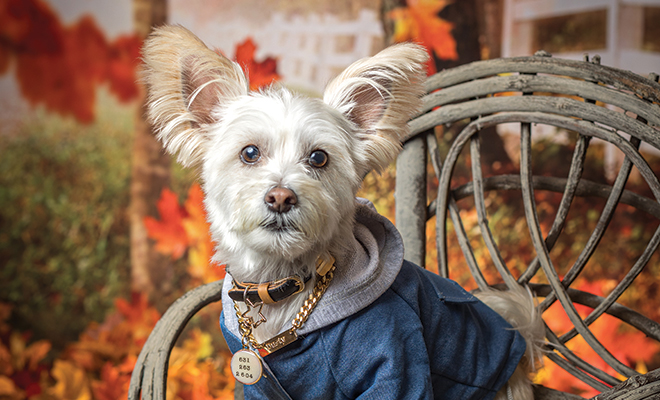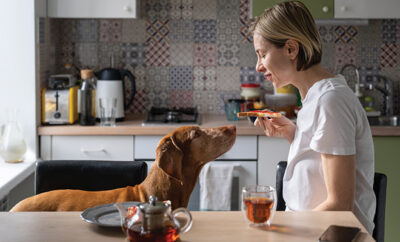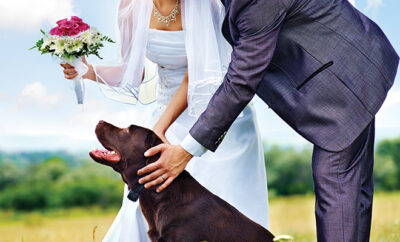
Whiskers and Fluffy Tails: Taking the Perfect Pet Picture
There’s not an honest pet owner out there who can deny that they rush to their cameras or phones just to capture those sweet, silly seconds when their pets are posing perfectly. Or maybe they’re running amok and they want to capture them in their natural state of being a pet!
A ccording to the North American Pet Health Insurance Association, 30 percent of Americans dress their pets up for the holidays and 67 percent include them in a holiday photo. But aside from your amateurish photos taken on the fly, here are some photographer tips offered for taking the perfect pet picture.
According to Grace Chon, a pet photographer in Los Angeles, there are some tricks to capturing your pet’s image. First, you let your pet do what they do best—be an animal! Take pictures of them in places where they like to hang out and let their personality shine by giving them a favorite toy. Be sure to reward them after a few shots with a doggie treat. Otherwise, you might have a hard time holding their attention for long periods of time. And pay attention to their non-verbal cues about their reaction to the lens. Some animals may view it as a giant eyeball staring at them. It’s important to help them get used to the camera so they aren’t intimidated by its sounds and appearance.
Don’t be afraid to act silly to get the reaction you want from a pet. Make funny noises to get them to tilt their head or perk up their ears. And if you start running around, they’ll want to do the same. Of course, these tricks usually apply to dogs since cats are more standoffish. With felines, a hands-off approach works best and allows them to take the lead in their own timing.
There are technicalities to getting a good shot. Since you want details like hair strands to stand out, you don’t want your photos to get overexposed. If outdoors, shoot in full shade and if indoors, use a room with diffused light. Avoid using flash indoors because it will give your photos a harsh “Hollywood” look. Limit photo retouching to small increases in contrast and color intensification so they don’t appear artificial. It’s important to know how to operate your camera, and today’s new models have lots of functions that allow you to experiment. You can use the focus and zoom functions for capturing details such as claws and fur.
Start by filling the frame with the pet as the main subject of the photograph, front and center. Later you can consider cropping and making changes, but in the beginning, make the pet the focus. With today’s digital photography, you can take as many pictures as your camera’s memory will hold, and editing is just as easy on a phone. So, shoot away until you get the shots you like! Don’t be hesitant to take repetitive shots if they’re photogenic.
Without creating anxiety in the pet, take close-up shots by using your zoom feature. There’s nothing quite as cute as capturing whiskers, teeth and tongues in a photo! Remember to stay calm and try not to stress over the process. If your frustration level rises, so will your stress. And pets will pick up on any anxiety you exude. If your subject is not sitting still for your shots, take a break for both of your sakes. Patience is key when photographing pets!
You should develop a relationship with the pet by letting them sniff your hand, and approaching them with an open, genuine attitude. It’s important to be caring and not fearful toward the animal. Find a neutral place where the pet can roam and open up their personality. This is a good opportunity to take a few test shots to set your exposure and shutter speed. Since most pets enjoy toys (dogs like squeaky noises and cats like toys that capture their curiosity), bring a few along to get their attention. If you can get a pet to follow simple commands such as sit, stay and down, it will help you as you try to create poses. This is where treats and lots of positive praise come in!
Since animals don’t tend to sit still, set your camera to fast shutter speed and take continuous shots to capture that perfect pose. Take photos from all angles, get down on the pet’s level so you can see things from their perspective, or take a shot above them so they’re looking up. And focus on their eyes. Animals use them to do their “talking,” and your lens should focus on them to capture what they’re saying to the world!
Sources: gadgetwise.blogs.nytimes.com, aplaceforpaws.com blog.adoramapix.com and Family Circle.







